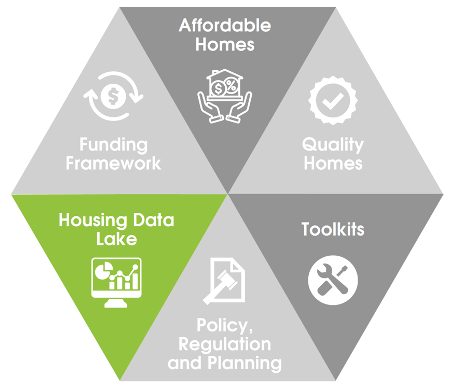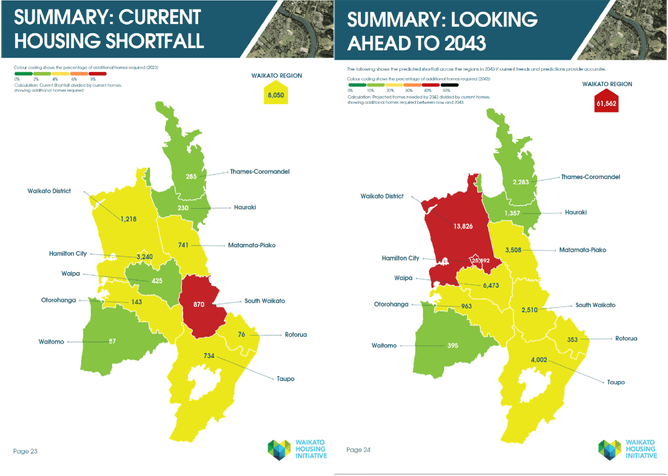The WHI was established under the Waiakto Plan in 2016 as part of the Waikato Plan and is the peak leadership body for housing in the Waikato. The WHI vision is that “Every person and every family in the Waikato region is well-housed, living in sustainable, flourishing and connected communities”.
WHI members work to change the current status quo of housing across the region by leading, connecting and facilitating the delivery of affordable, quality and accessible homes in the Waikato. The Initiative has created a framework that supports the delivery of affordable housing by our members across the region. The trustees of the WHI are Manu Taki for SDG 11 of the Waikato Wellbeing Project, and WWP is a member of the Waikato Housing Initiative leadership group.
This has been recognised by central government and the philanthropic sector. Our aim is to embed affordability at all levels of the housing conversation. The long-term impact of this drive will see not only more houses being built but more of the right types of houses for our growing population.
The WHI framework is focused on six elements as set out below. The WHI and WWP have worked together to agree on how we can support the WHI’s vision within the mandate and priorities of the WWP.
We have supported the Housing Data Lake priority of the WHI in several ways:
Building an on-line housing dashboard which tracks and reports on the key attributes of the Waikato housing system. We undertook with work in 2022 and the dashboard is live on both the WHI and WWP websites (see Housing Data Lake | Waikato Housing Initiative). The dashboard is currently being updated to ensure all data is current.
Updating the Waikato Housing Stocktake. The housing stocktake was first undertaken in 2018 and provided the first analysis of the total number of people and homes in the Waikato, the likely increase in population by 2043 and the number of houses needed to ensure everybody is homed. Since that time there has been a historically large increase house building in the Waikato, although most of those homes have been in the northern part of the region.
Stocktake Key Results
Estimated Homes. The number of homes for the region is currently ~216,000. Of this, ~194,000 homes are available for use, after adjusting for the census classified “empty homes” (holidays homes, homes under renovation). The Statistics New Zealand high household projection number serves as the primary indicator for estimating housing demand. Between 2018 and 2023,~19,000 additional homes were projected to be required using this method. This compares to ~20,000 additional homes actually constructed.
Homes Built. A record ~20,000 homes were constructed since 2018, despite the Covid 2019 epidemic, global supply chain issues, building costs increasing by ~30% and extreme weather events. The lower interest rate environment (sub 4%) during this period supported the market.
Housing shortfall. This report has adopted a household estimate for the Waikato region of ~202,000 homes, which compares to available homes of ~194,000. The resulting housing shortfall for the Waikato region is ~8,000, which is spread unevenly across the region. At the same time the social housing register had ~2,700 families on it, representing families in serious housing need requiring government support. In 2018 there were ~4,400 social housing laces in the Waikato region, which increased to ~5,000 in 2023.Despite the increase in the social housing (~600), the housing register increased from ~900 in 2018 to ~2,700 in 2023. In 2018, demand for social housing exceeded places available by 20%. By 2023, this shortfall had increased to 53%.
Affordability. Affordability is still an ongoing issue with prices up ~45% over a 5-year period.
Looking Ahead. Census projections indicate a need for ~62,000 additional homes in the Waikato region by 2043. Given the complex range of factors influencing housing demand, including net migration, and the long timeframe involved, these projections serve as an initial reference point, from which various scenarios may emerge.
The report can be viewed at this link: https://www.waikatowellbeingproject.co.nz/kainga--housing/ . For more information please visit Home | Waikato Housing Initiative or contact whi@waikatohousinginitiative.org




